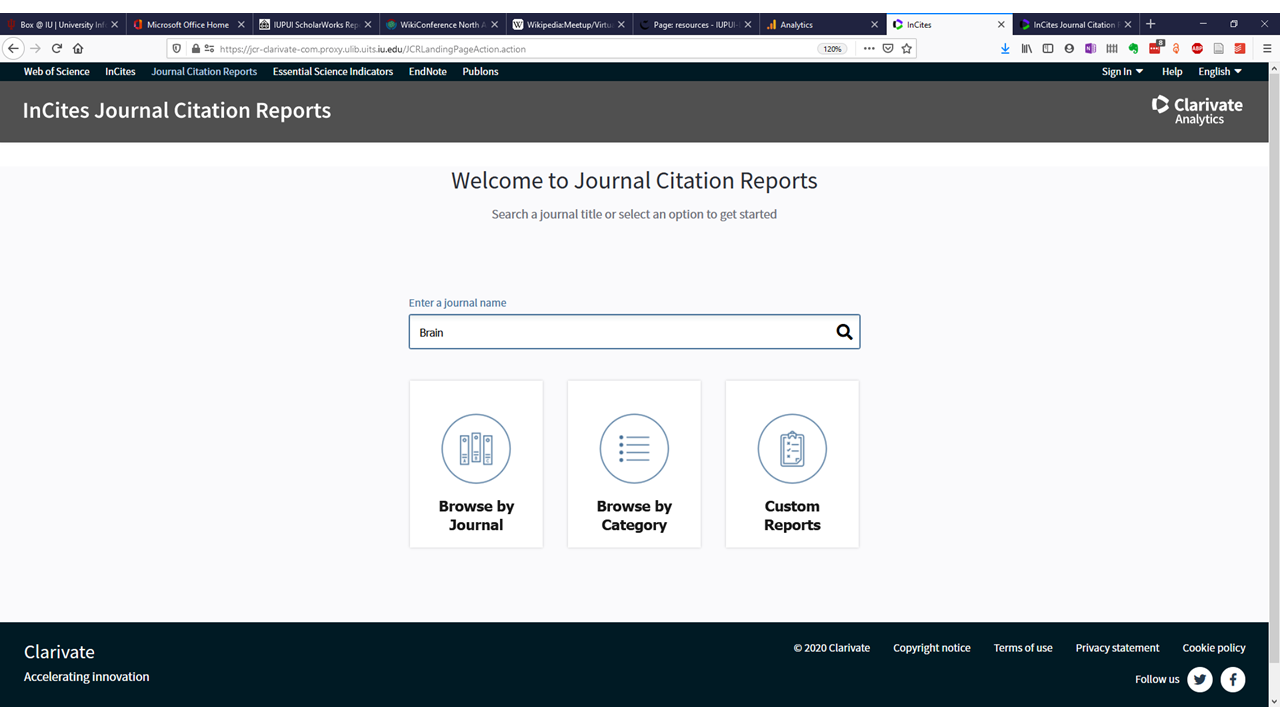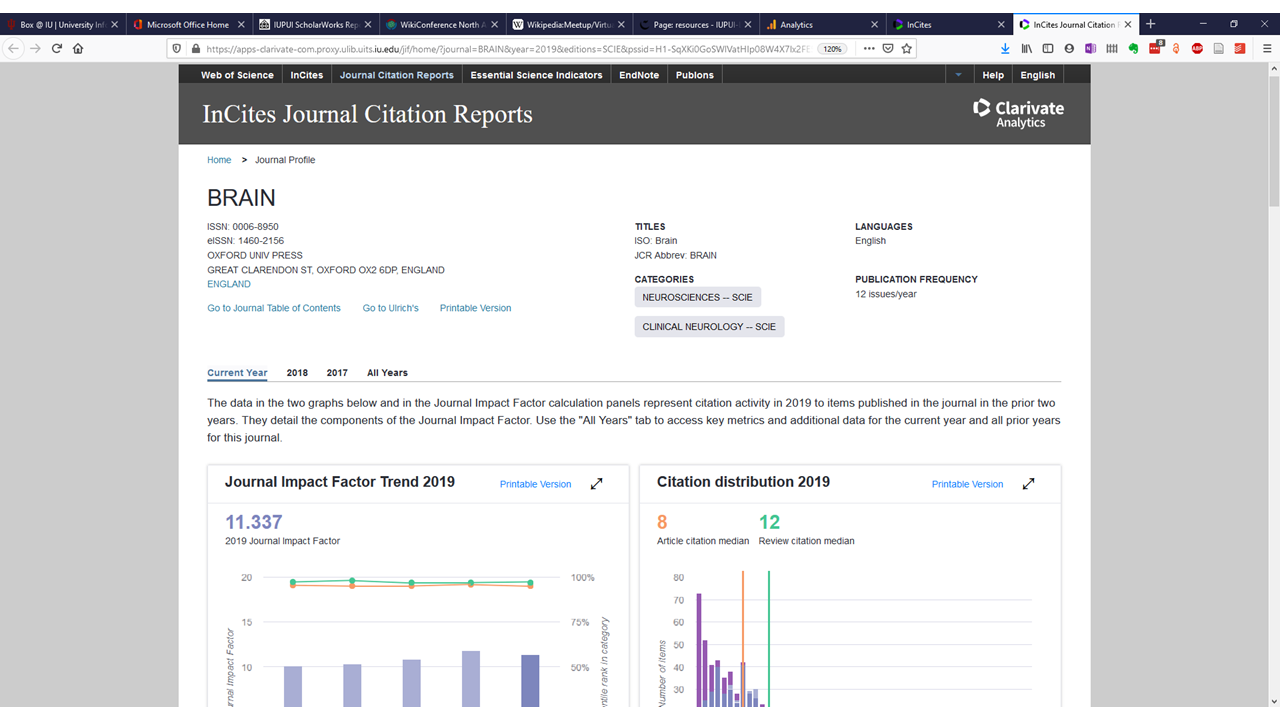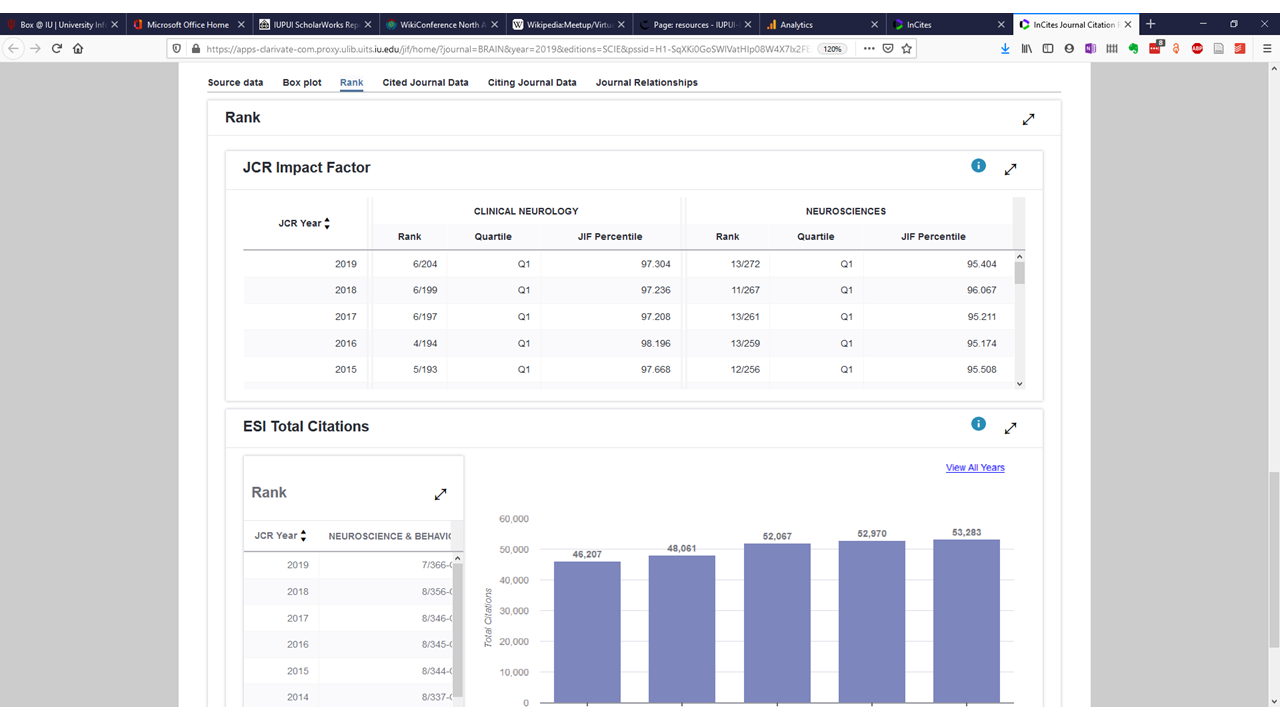Introduction
The (Web of Science) Journal Citation Reports is a database provided by Clarivate Analytics containing journal metrics. The Web of Science Core Collection, which is used to generate the metrics in Journal Citation Reports, contains more than 21,000 journals in addition to books and conference proceedings. Subjects covered include life sciences, biomedical sciences, engineering, social sciences, arts & humanities, though the strongest coverage exists for natural sciences, health sciences, engineering, computer science, materials sciences. Though its coverage is broad, not all journals will be indexed in Web of Science. If the journal of interest is not included, you may want to check Scopus and Dimensions, the other major citation databases. The Journal Citation Reports subscription is provided by the IUPUI libraries.
We strongly encourage users to read and consider the information provided in the Journal Impact Factor (JIF) Policy Brief before using it to evaluate individual scholars and products. More information about the JIF is also available from the Metrics Toolkit.
This recipe will show you how to gather:
- Journal Impact Factor, along with contextual information such as
- journal ranking and quartile for the assigned subject category
- the citation distribution for items published in the journal
- citation median for items published in the journal
What you need
Before you get started, we recommend having a copy of the cv handy and a file to record the data. We use Excel, but if you prefer Word tables, those work too. A sample table structure is below.
| Journal Title | Publication Year | Journal Impact Factor (JIF) & Ranking |
| Brain | 2016 | JIF = 10.3
ranked 4 of 194 (Q1, 98th percentile) journals in the subject category "Clinical Neurology"
ranked 13 of 259 (Q1, 95th percentile) journals in the subject category "Neurosciences"
|
| College & Research Libraries | 2016 | JIF = 1.5
ranked 33 of 85 (Q2, 62nd percentile) journals in the subject category "Information Science & Library Science" |
Searching JCR
On the JCR home page, type or copy in the first few words of the journal title.

The Journal Profile page defaults to the information for the current JIF year. For example, the 2018 JIF represents citations accrued in 2018 to articles published in 2016 & 2017. We recommend using the JIF for the year in which the particular article was published. When you have published in a journal multiple times across several years, you may want to present the range of JIF values for those years. However, article level metrics provide more direct evidence of the impact of particular articles than do journal metrics like the JIF. See the JIF Policy Brief for more details.

We recommend always presenting the JIF along with contextual information to provide appropriate context for reviewers. The range of JIF values can vary widely depending on the discipline. Useful context often includes the journal ranking and quartile (see screenshot below) for the assigned subject category and sometimes the citation median and distribution for items published in the journal (see screenshot above).

How to use and talk about journal citation metrics
Citation metris are generally regarded as strong evidence and can be useful indicators of usage and scholarly impact. However, remember that scholars cite for many reasons, so citation metrics should not be considered an indicator of quality. Additionally, metrics about journals (i.e., Journal Impact Factor) are not good predictors for the number of citations any particular article will receive. See our brief on the Journal Impact Factor for more information.
Below, we have provided a few examples for how you might talk about or use journal citation metrics as evidence in your dossier.
Most articles in “Education & Educational Research” journals receive fewer than 1.6 citations in the first two years of publication (Median Impact Factor, Journal Citation Reports 2019). This article has accrued 16 citations in the first two years of publication (Google Scholar).
Journals in the discipline of Public Administration are slow to accrue citations. Half of all journals in the current edition (2017) of the Journal Citation Reports category for Public Administration receive fewer than 1.44 citations per article in the first two years of publication. Works in this discipline, however, are relevant to readers for many years—in 2017 half of all citations received by journals in Public Administration were to articles that were at least 8.9 years old. Although scholarship in Public Administration needs time to mature and develop an audience, [candidate's] work is often cited more quickly than the norms for their field.
Most articles in the JCR category, “Information Science & Library Science,” receive fewer than 1.6 citations in the first two years of publication (Median Impact Factor, 2019). Like many Social Science fields, “Information Science & Library Science” literature accrues citations over several years, with half of the category’s received citations attributed to articles that are at least 8.3 years old. In other words, articles that outperform the citation rate for the category are likely to continue to have a growing citation profile for 8 years if not more.
I have regularly published in the journal "Everything you want to know about metadata" since 2009, which is consistently ranked in the top 25% (Q1) of journals in the category "All things metadata" (Journal Citation Reports, Clarivate Analytics).



